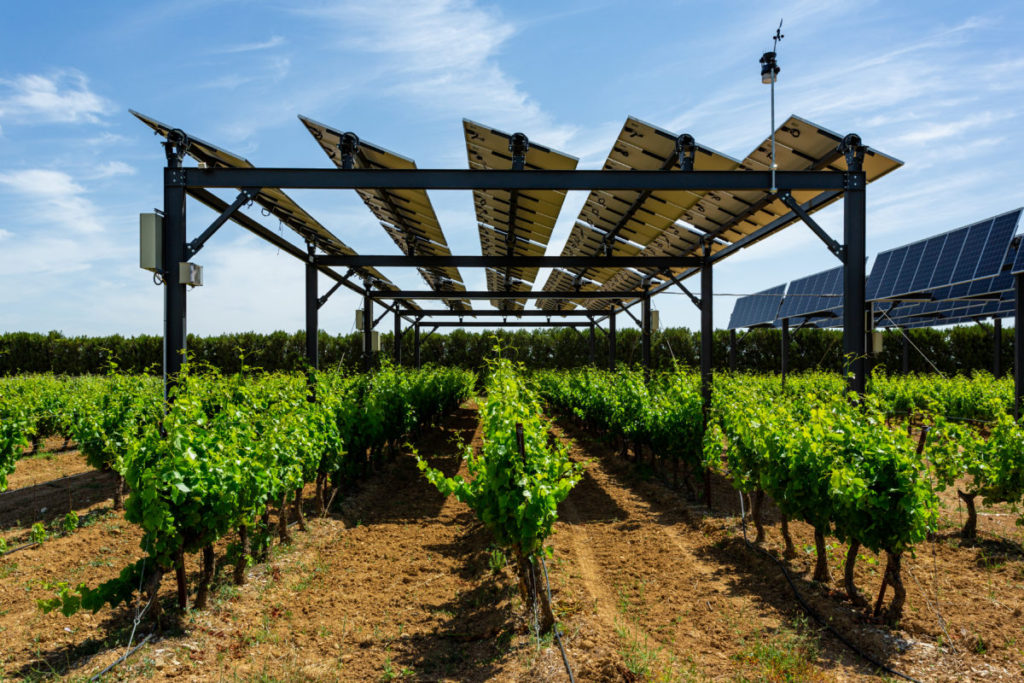A good year for solar: Agrivoltaics in vineyards

French agricultural PV specialist Sun’Agri has revealed the results of tests run on a solar plant integrated with viticulture. During heat waves, the company said, vines shaded by solar panels continued to grow and needed less water.

“Vines are among the crops most affected by the effects of climate change so it is essential that they be at the heart of our experiments,” a spokesperson from the Sun’Agri subsidiary of French solar developer Sun’R, told pv magazine. We’ll drink to that!
Sun’Agri has installed a viticulture agrivoltaic system in the Vaucluse department of southeastern France in partnership with the local chamber of agriculture as part of the Sun’Agri 3 program supported by the French Environment and Energy Management Agency (Ademe).
The plant was set up in the wine-growing area in Piolenc, in Hérault, as part of a program to test how agrivoltaics perform in specific crop cultures.
“Out of 1,000m² of vines planted with [the] black grenache [red wine grape], 600m² were covered by our dynamic agrivoltaic system,” the Sun’Agri spokesperson said. The 280 panels used have a generation capacity of 84 kW, were placed at a height of 4.2m and can be moved in real time using an artificial intelligence (AI) algorithm the French agrivoltaic specialist has been developing for more than a decade.
The algorithm is said to be able to determine the ideal tilt of the panels according to the sunshine and water requirements of viticulture, growth model of the crop, soil quality and weather conditions. “Artificial intelligence is programmed to favor the growth of the plant,” said the Sun’Agri representative. “In the event of extreme climatic hazards – drought, heatwave, hail, frost, heavy rain etc – the AI controls the panels to protect the crops.”
Initial results
The PV structure made it possible for the vines sheltered by panels to avoid having their growth stunted during heatwaves, according to Sun’Agri.
Water demand was also reduced by 12-34% for the PV-sheltered vines thanks to a reduction in evapotranspiration – water evaporating through the soil, said the Sun’Agri spokesperson. It has also been claimed the aromatic profile of the grape was improved in the agrivoltaic set-up, with 13% more anthocyanins – red pigments – and 9-14% more acidity.
The Sun’Agri 3 program is due to pass from its demonstration to a commercial phase in 2022 and also includes agrivoltaic projects linked to arboriculture, greenhouse gardening and arable crops across 15 installations.
From: https://www.pv-magazine.com/2020/03/31/a-good-year-for-solar-agrivoltaics-in-vineyards/

